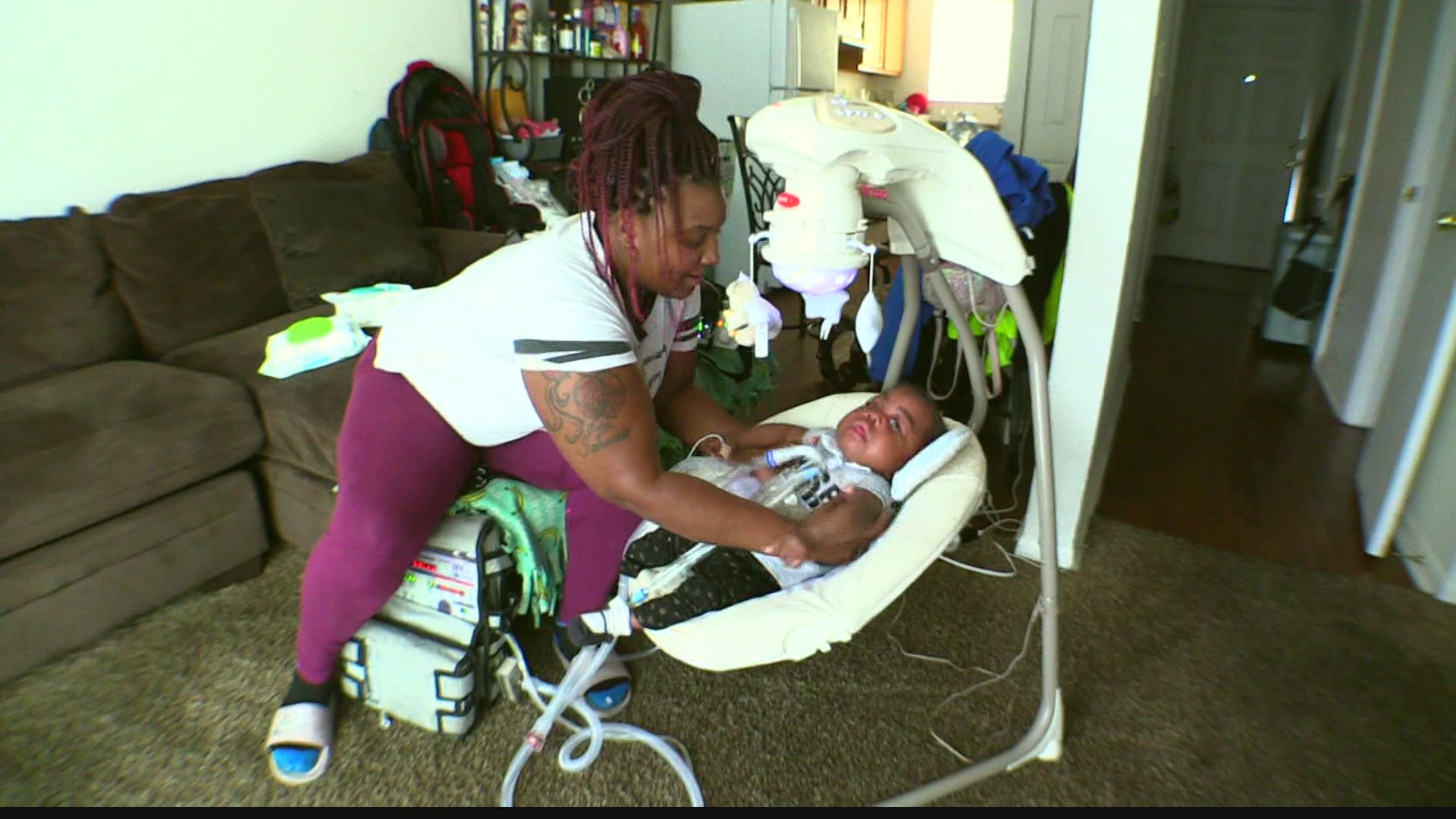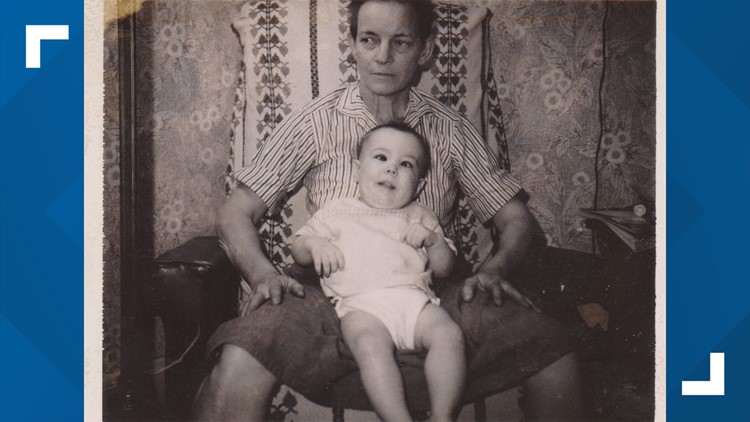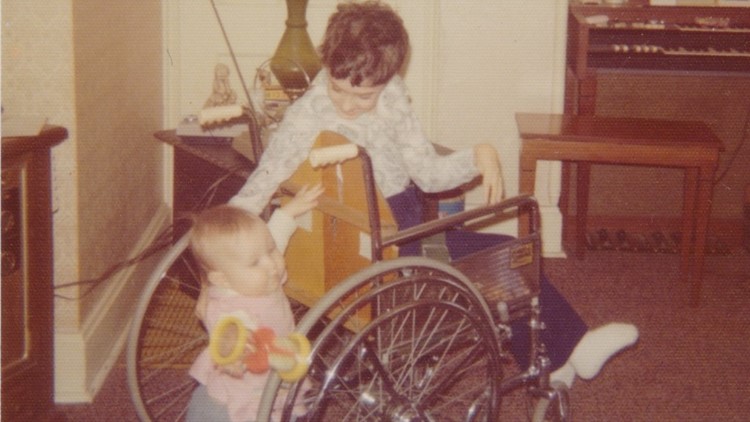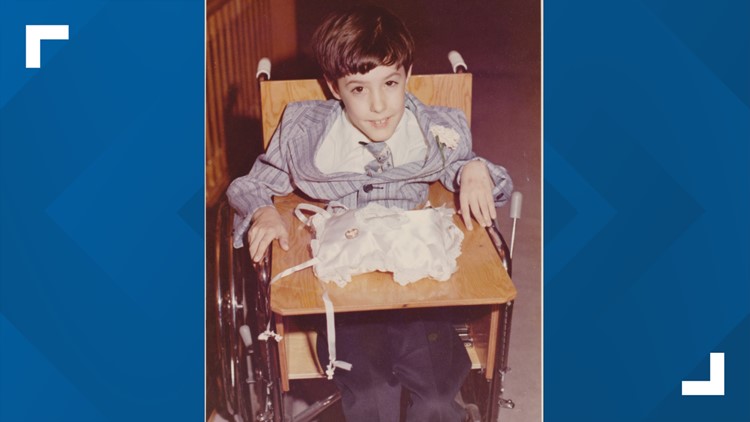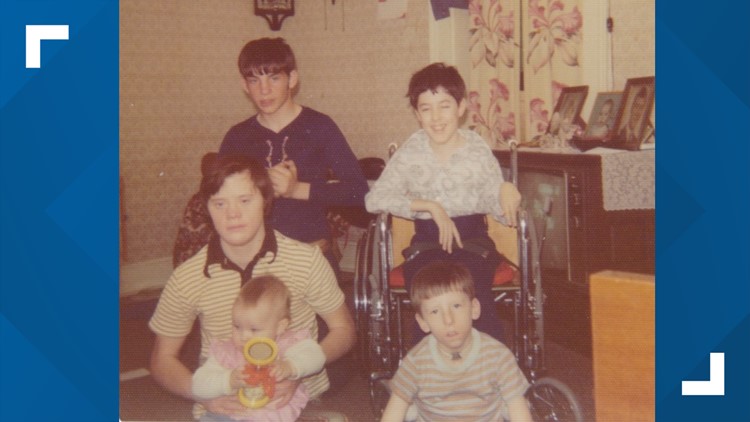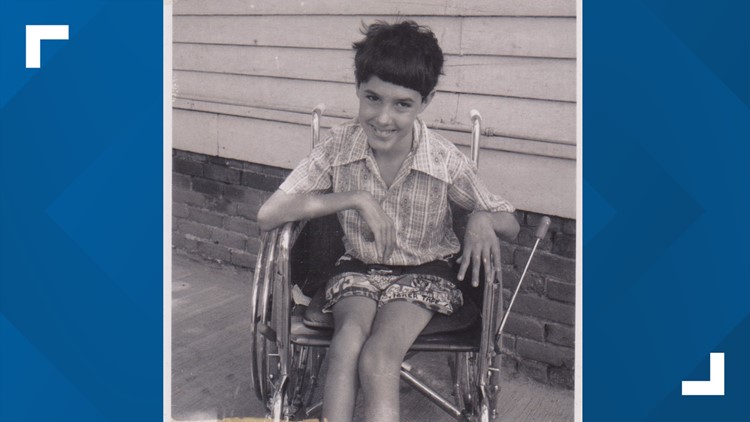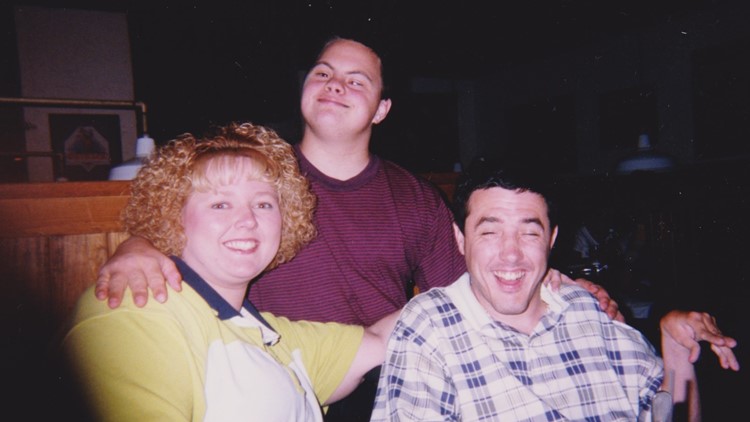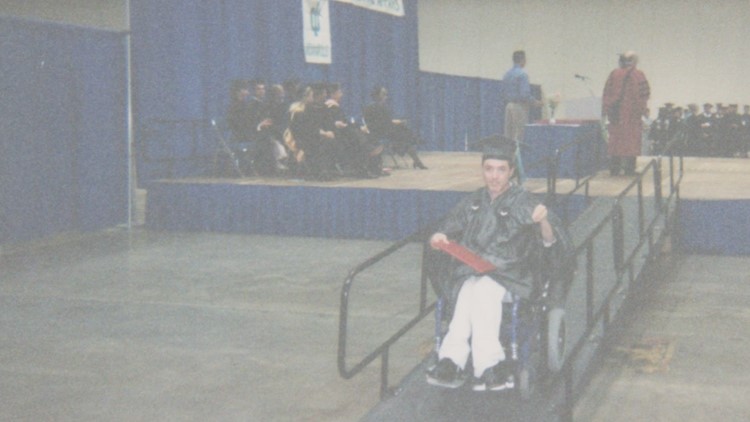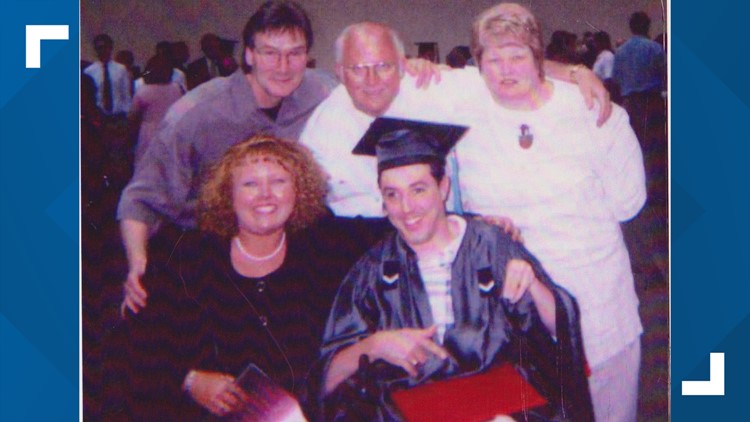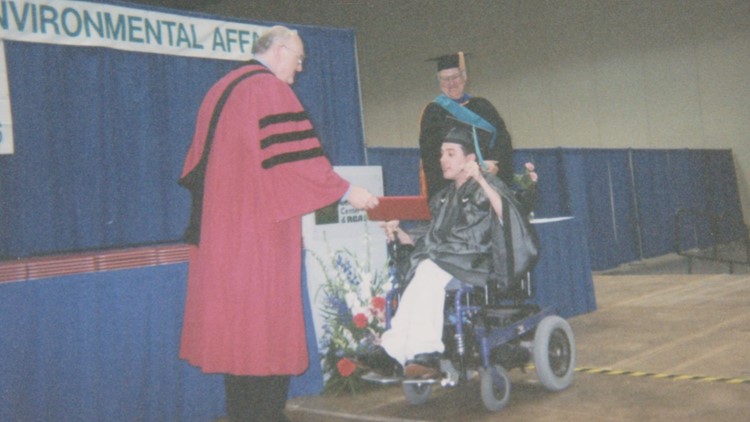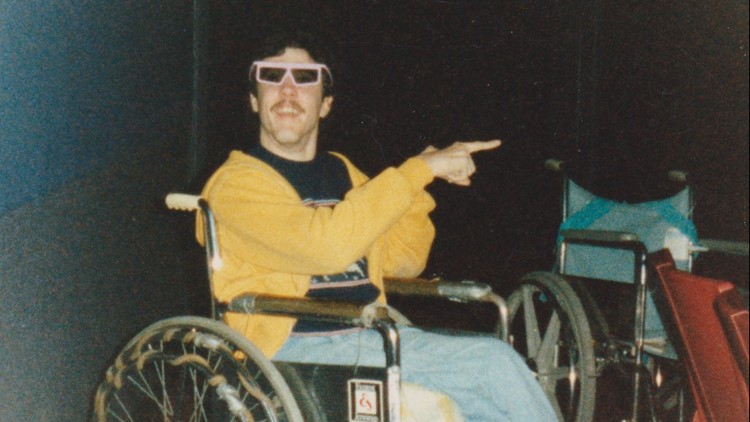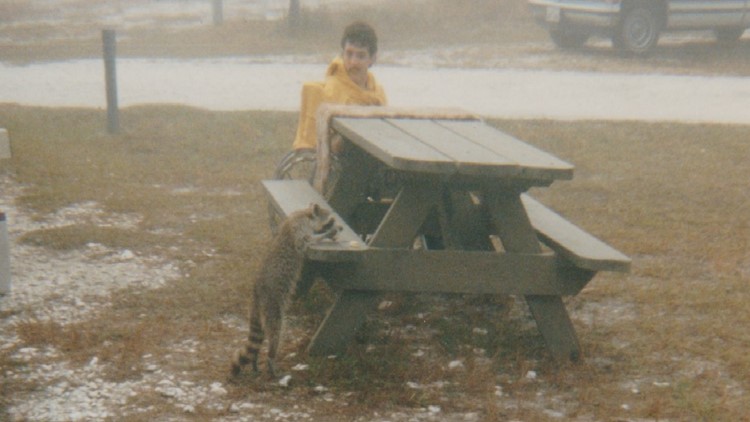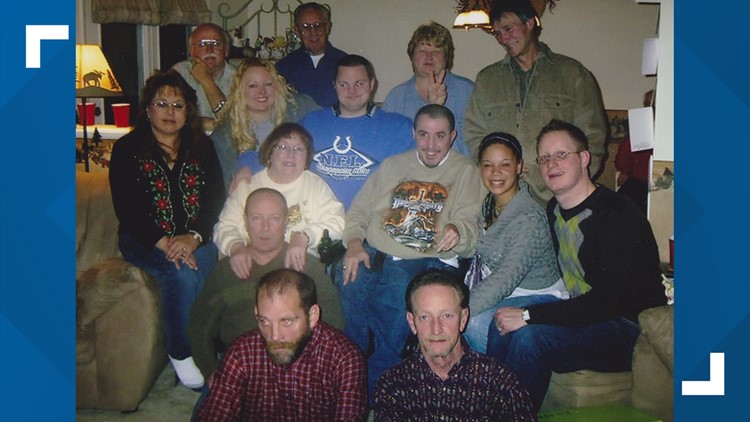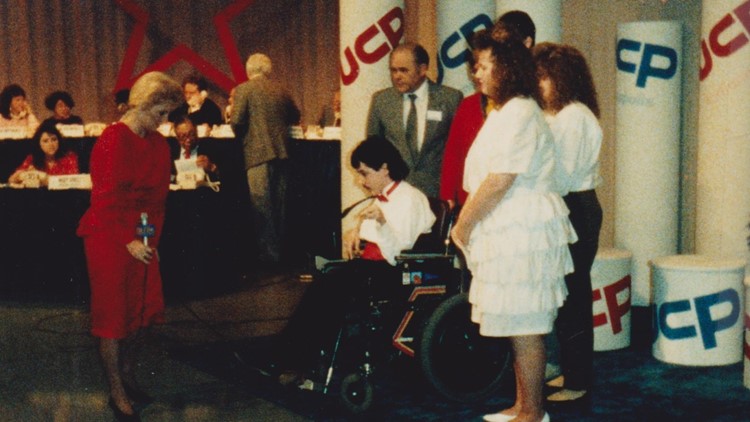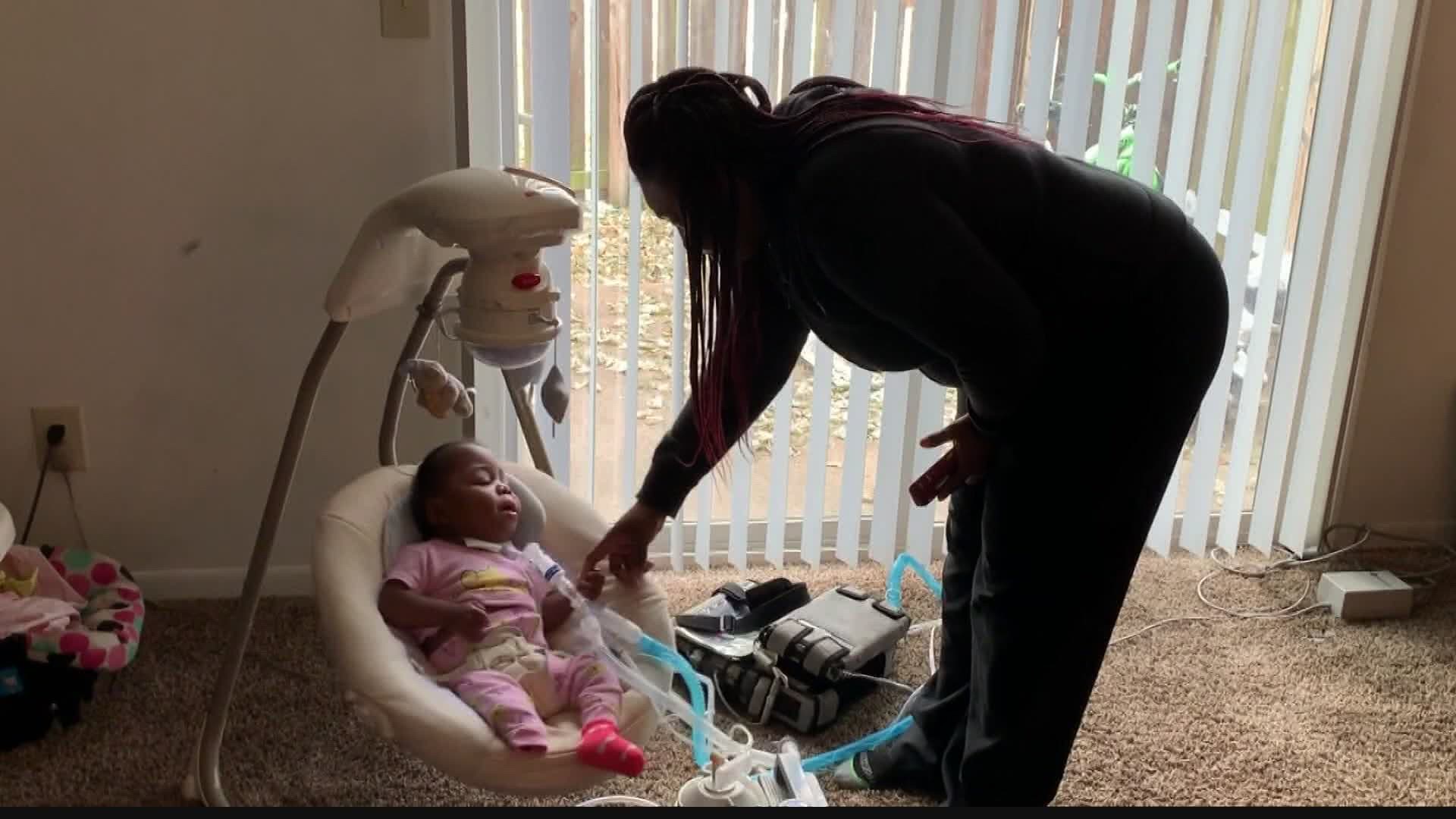INDIANAPOLIS — In 2019, Indiana Gov. Eric Holcomb appointed Jim Aegerter to the Governor’s Council for People With Disabilities. For Aegerter, who was born with cerebral palsy and who spent countless hours fighting for other Hoosiers with special needs, being appointed to the state agency meant a lot.
But what the governor did not give Jim Aegerter was what the Greenwood resident needed most: a chance to go home.
"There is no medical necessity for me being in this nursing home,” Aegerter told 13News last summer from inside a Greenwood nursing home. “Basically I'm just taking up space and it's costing a whole lot of money.”
Aegerter lived an independent life. His cerebral palsy meant he needed help getting in and out of bed, getting dressed and using the restroom. But for years, he was able to do all those things at home with the help of a nurse.
It wasn’t until Indiana started facing a chronic shortage of home nurses that Aegerter lost his independence. Unable to get in-home nursing care, he was essentially forced to move into a nursing home.
“I’d much rather be living at home,” Aegerter told 13News when asked where he would like to live. “That's a no-brainer. In my home or in the community.”
Jim never made it home. Last month, he unexpectedly died in that Greenwood nursing home.
“I had two voicemails: one from a nursing home and one from a funeral home,” said Melissa Young, Aegerter 's niece. “When I got that, there was a gut-wrenching feeling that ‘Oh my God, something has happened.’"
Young says her 58-year-old uncle died of an apparent asthma attack. It happened exactly one month ago in the one place Jim did not want to be.
“Every time I talked to him, that was the first thing we talked about. He hated being in a nursing home,” Young told 13News. “I’m struggling with his death, but then the nursing part is what I’m struggling with now. It’s like why? When was the last time a nurse checked on him? Why didn’t they call 911? There’s just so many questions there.”
Aegerter’s story is not unique. Data obtained by 13News as part of WTHR’s ongoing investigation into Indiana’s home nursing crisis shows millions of hours of home nursing care that state agencies approved and that sick, elderly and disabled Hoosiers desperately needed were never provided.
Jim Aegerter through the years
Thousands of lives affected
Jeni Hathaway is also far too familiar with Indiana's home nursing crisis.
“I don’t understand why the state won’t do something about this. Lives are at stake,” she said, wiping tears from her eyes. Hathaway spoke to 13News last spring following the death of her 23-year-old daughter, Cheyanne.
Like Aegerter, Cheyanne was born with medical disabilities but thrived at home with the help of in-home nursing. When her primary home nurse got sick and could no longer work, the family discovered there were no other trained nurses available to meet Cheyanne’s medical needs. The state approved Cheyanne for 70 hours of home nursing care each week because she was wheelchair-bound and relied on a ventilator to breathe, but her mother was lucky if home health care agencies could find nurses to staff even 20 of those hours. Jeni hoped the shortage would be temporary, but days without home nursing care turned into weeks. Weeks turned into months. Months turned into years.
“People have to understand, it’s not just a babysitting job. It’s fragile kids that their life depends on having a nurse, and they need to get paid what they’re worth,” Hathaway said, holding a long list of home nursing agencies that could not provide her with a nurse. “So parents get put in a spot of ‘Do I work [or] do I stay home and take care of my kids?’”

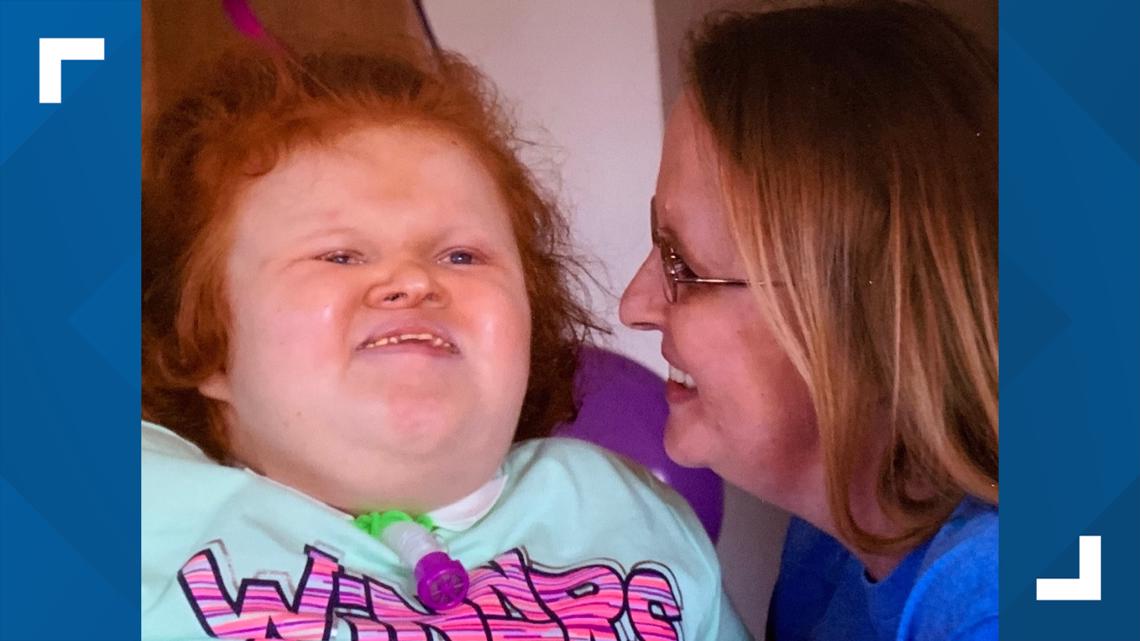
After five years of trying to care for Cheyanne on her own, Jeni made an excruciating decision. She moved her daughter into a Logansport nursing home.
While living at home with her mother and home nurses, Cheyanne had not needed a trip to an emergency room in 15 years. But at the nursing home, things were much different. Cheyanne was rushed to the emergency room five times during her nine months at the facility because of breathing difficulties.
Cheyanne’s death certificate indicates the young woman died from a complex combination of medical factors: pneumonia, a lack of oxygen and blood to her brain, and chronic respiratory failure. But her mother insists the real cause of death is Indiana’s shortage of home nurses.
“They’re better when they’re home. So much better when they’re at home!” she said.
And then there are the more than 6,079 Hoosiers in Indiana nursing homes and long-term care facilities who died when they contracted COVID-19. How many of those seniors would still be alive if there had been enough nurses and home health aides to care for them at home? The exact number will never be known.
“The health care system has forgotten that home care is the least expensive, most preferred form of care,” said David Totaro, an executive at Bayada Home Health Care. “If we had more folks that were able to be cared for at home rather than in nursing homes, we would have significantly reduced the number of fatalities across the country due to COVID-19.”
Staggering numbers released
13News has been investigating Indiana’s chronic home nursing shortage for two years. A 13 Investigates documentary, Gasping for Care, showed the impact of that shortage as families across Indiana wait for the state-approved home nursing care they were promised but never received.
13 Investigates has now obtained internal state data that, for the first time, shows the massive scope of the problem.
That data, provided by Indiana’s Family and Social Services Administration, reveals Indiana has been unable to provide millions of hours of home nursing care for Hoosiers who desperately needed it.
FSSA needed nine months to calculate and provide the numbers to 13News. They show the state agency approved requests for 25.2 million hours of pre-authorized home nursing care in 2018 and 2019. Those are requests for nursing that allow an individual to go to work and earn an income while their family member is cared for by an in-home nurse. Of the 25.2 million hours approved, only 19.1 million hours were actually used. That means 6.1 million hours of pre-authorized home nursing care that the state was willing to pay for over a two-year period was never used.

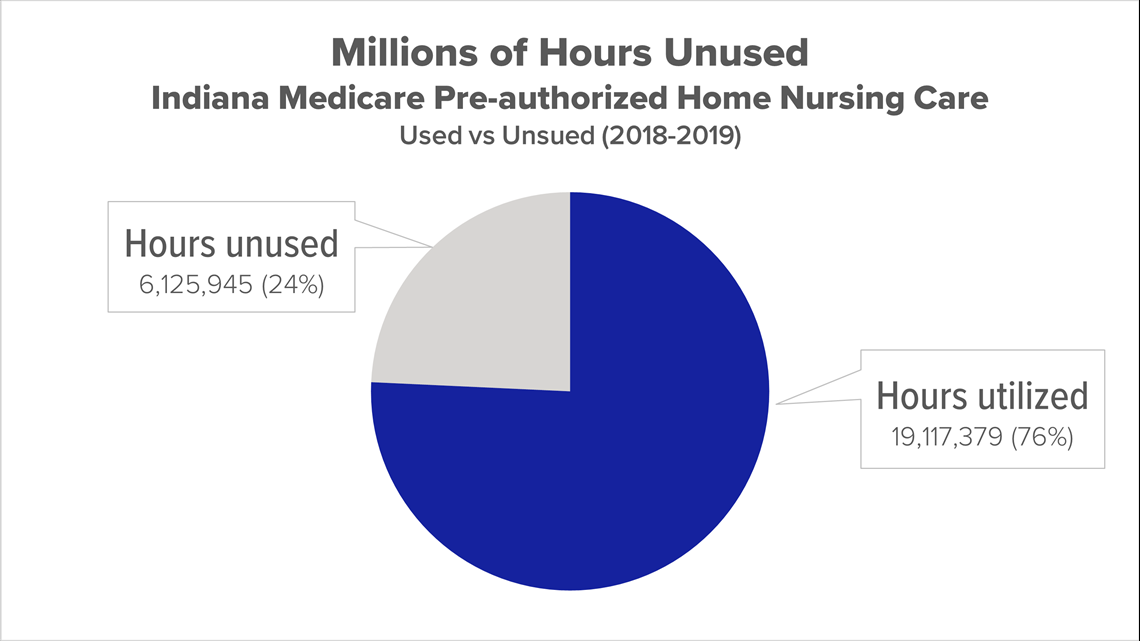
And that is just a portion of the home nursing care that families could not access, even after the state had already authorized it and agreed to pay for it.
13News also asked for data about respite care, the type of home nursing that allows individuals to go to the grocery store, a medical appointment or to simply get a few hours of sleep while a home nurse cares for their family member with disabilities. FSSA says it tracks those figures by dollar amounts, not by hours. The data shows Indiana approved requests for $58 million in home respite care in 2018 and 2019, but only $19.3 was actually used. It means about $38.7 million – two of every three dollars the state approved for home nursing respite care – was unused.

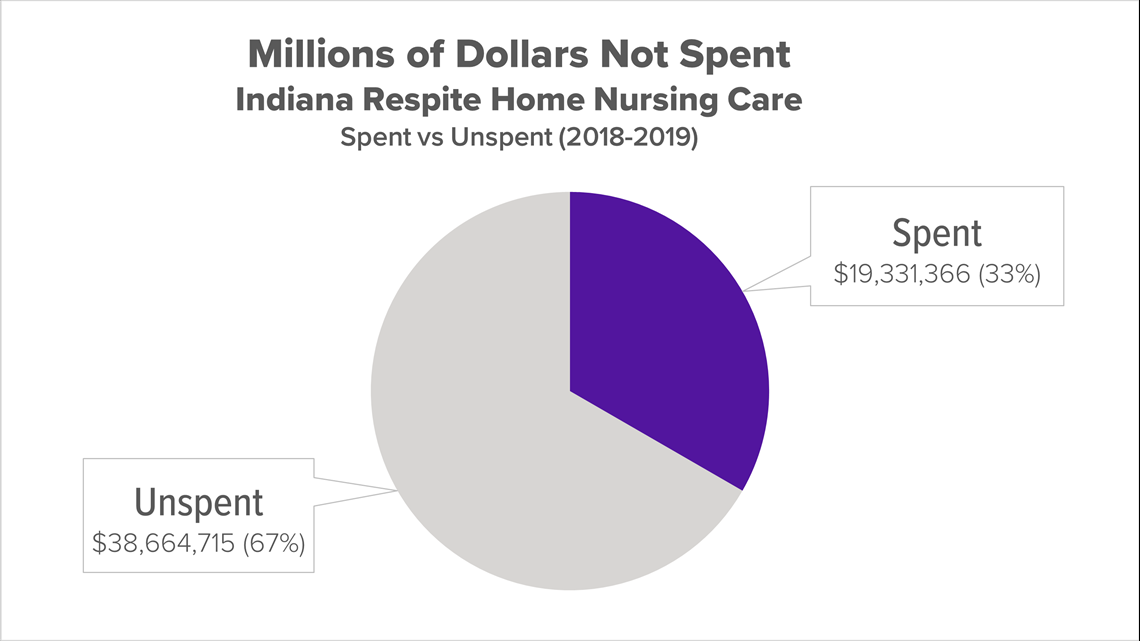
FSSA offered 13 Investigates multiple explanations, claiming that care managers often authorize more respite care for a patient than what is actually needed. The agency also said some people who are approved for home nursing care do not use all of their approved hours because they move into a nursing home, move out of state or die.
“This difference between authorized and actual expenditures is likely a culmination of all these reasons and not just one of them,” FSSA said in an unsigned letter from its office of general counsel.
But representatives from Indiana’s home health care industry say FSSA’s letter failed to mention the most important and glaringly obvious reason that millions of hours (and millions of dollars) of approved home health care in Indiana were not used: the state simply does not have enough home nurses to provide the care families are entitled to receive.
“Yeah, it’s pretty obvious and you can’t just gloss over that. The hours that are approved, they’re not being utilized because there’s not enough caregivers out there,” said Eric Deitchman, co-owner of Tendercare, which is one of the largest home health care agencies in Indiana. He says his agency alone has a waiting list of 200 families waiting for a home nurse.
“We get calls from crying moms every day saying we need help. It’s sad we don’t have the care to provide all these people because they desperately need it,” he told 13News.
The statistics obtained by 13News do not come as a surprise to the Indiana Association for Home and Hospice Care, which for years has been asking state leaders to address Indiana’s home nursing shortage.
“Those numbers really define in detail the depth of the problem that’s so acute in home health care,” said Evan Reinhart, IAHHC executive director. “There just isn’t sufficient workforce to take those patients on.”
Why is there a home nursing crisis in Indiana?
WTHR’s 2-year investigation showed home nurses in Indiana are paid significantly less than nurses who work in hospitals or nursing homes. And some home healthcare workers can earn more working as a server at a restaurant or as a cashier at a hardware store than providing in-home care for a person with challenging medical needs.
As a result, home health care agencies say recruiting and keeping qualified nurses and home health aides is a constant uphill battle.
Confronted 18 months ago with the stories of Indiana families helplessly seeking home nursing care that was not available, the governor told 13News he would handle such cases “on an individual basis” to help ensure Hoosiers with disabilities were not falling through the cracks. He instructed FSSA to contact the families featured in WTHR’s documentary, but all of those families told 13News they received no actual assistance from FSSA following the phone calls.
Rather than a short-term fix to address a handful of problems, health care advocates urged state leaders to take a more comprehensive approach by tackling the root of the problem: extremely low reimbursement rates for Indiana’s home health care workers.

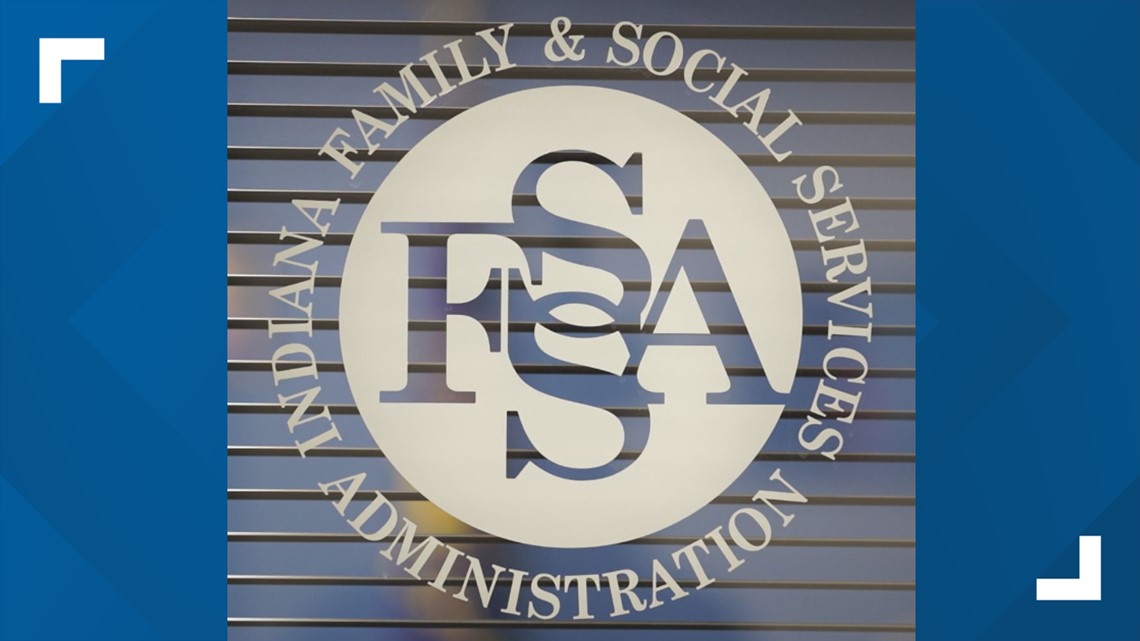
Each state actually sets its own reimbursement rates for home health care workers, and Indiana’s pre-authorized reimbursement rates for skilled home nurses and home health aides are essentially the same as they were a decade ago. When 13 Investigates asked FSSA about that in 2019, agency leaders pledged to work with state lawmakers to address the low reimbursement rates in a future state budget.
“Adjustments to the home health rates would need to be ready to propose for the next biennium budget, which would be the 2021 biennium budget,” FSSA secretary Jennifer Sullivan told WTHR at the time. “We know the nursing pay differential between working in a hospital and working in a home is significant … we have work to do and we are actively engaging in the process to make sure we make these [home] services easily accessible.”
But the 2021 budget state lawmakers are now debating doesn’t include a single dollar for higher reimbursement rates for home nurses – devastating news for Indiana’s home health care industry and for the families desperately waiting for home nurses.
“To be doing this for so long and to not have made progress is really disheartening,” said Deitchman, one of several home health care executives who has worked with FSSA and state lawmakers for years to advocate for better reimbursement rates for home nurses.
“They just seem to be kicking the can down the road once again,” added Totaro. “The numbers you have are appalling, and when you have that many hours that have been approved and not enough staffing, you end up sending those patients to more expensive settings like skilled nursing facilities or hospitals. In the long run, the state is actually paying more by not adjusting the [home nursing reimbursement] rates.”
Change is coming…but when?
During his most recent state of the state address in January, Gov. Holcomb announced he wants Hoosiers to have greater access to home health care.
“We know 75 people of people over 50 prefer to age in their own home, yet only 45 percent of Hoosiers who qualify for Medicaid do,” Holcomb said.

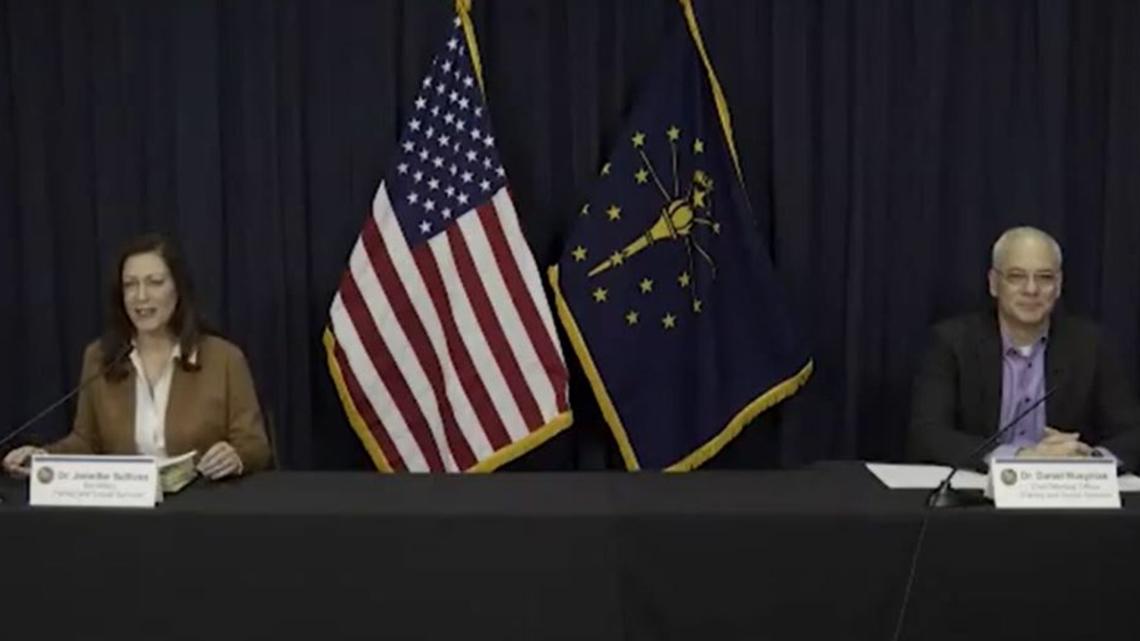
During a virtual news conference a few days later, FSSA provided more details of its plan to “rebalance” Indiana’s long-term care services by giving residents more choice in deciding whether they receive long-term care at home or in a nursing home.
“This is the right time and the right place for collaboration and meaningful change,” Sullivan said at the press briefing, where she acknowledged Indiana’s standing (in annual AARP rankings) as one of the worst states in the nation for providing residents choice in where they receive long-term care. “We haven’t done the right thing in allowing that choice to be possible for people in Indiana, so we have to prioritize that,” she added.
FSSA’s plan is to shift funding from nursing homes – which currently receive the vast majority of Indiana’s long-term care dollars – to home nursing care and community-based services. The goal, Sullivan said, was to get to a 50-50 split in funding between long-term care facilities and home and community-based services.
Indiana is currently a long way from achieving that split. In 2019, data shows Indiana nursing homes and long-term care institutions received 81 percent of the state’s Medicaid funding, while home and community-based services got only 19 percent of those federal funds. It represents one of the most lop-sided and unbalanced expenditures for long-term care in the nation.
Sullivan admitted the shift to providing greater access to home health care will not be fast.
“That process takes quite a bit of time… to build up workforce, build up family caregiver supports, talk about the quality metrics that we want to incentivize and do that work while we are waiting for managed care to come into play over the next several years,” she said.
How the state is going to build up workforce when it has not addressed better pay for home nurses is unclear. Based on Indiana’s significant shortage of home nurses, shifting thousands of patients from nursing homes to being cared for in their own homes could make the crisis even worse if the state does not create a plan to quickly attract more home nurses.
“The industry isn’t sustainable in Indiana at its current pace, let alone sending more patients to home care, and we know more and more people want home health care,” Totaro told 13News. “We can’t accommodate more patients in home care without the state adjusting its spending.”


FSSA believes improved access to home healthcare can be “budget neutral” because, as Totaro pointed out, home nursing care generally costs much less than healthcare provided in a nursing home or hospital.
“Because the cost of institutional care is so much greater than home care, you don’t have to keep that many people out of institutions to really offset the costs that it would take to move to managed care,” explained Dan Rusyniak, FSSA chief medical officer.
Whether the money comes from the state General Assembly or from reallocating federal Medicaid funding, increasing reimbursement rates for home nurses will be essential if the governor’s newly-announced long-term care plan is to be successful.
Families impacted by Indiana’s home nursing crisis tell 13News they don’t care where the funding comes from. They simply want state leaders to properly fund home health care so Hoosiers can access the millions of hours of home nursing they desperately need.
“You think about how long this fight has been going on and it just seems like it’s getting worse. It’s costing lives,” said Melissa Young, who is still mourning the recent death of her uncle. “I know Jim. If he was still with us, he’d still be fighting this and trying to advocate for individuals. Nursing homes just aren’t appropriate for every individual.”
FSSA response to 13News questions about state's rebalancing plan
In response to WTHR’s questions about the state’s long-term care “rebalancing” plan and whether FSSA will increase reimbursement rates for home nurses and home health aides, FSSA spokesman Jim Gavin provided 13News with the following statement:
Improving Indiana’s home- and community-based services and supports system is a top priority for our agency, with the ultimate goal being to give more people on Medicaid the choice and ability to receive quality care at home by making services and supports more effective and better coordinated. FSSA is actively engaged with providers and stakeholders on a multi-faceted strategy to make this a reality. This coalition of experts is looking closely at the financial matters including how rates would be structured under the new system. As Dr. Sullivan stated in the press conference, the goal for this program is to achieve a 50/50 split (spending 50% on home- and community-based services and 50% on institutional services) and that doing so would move more of the overall spend into the home- and community-based realm while allowing the program as a whole to be budget neutral.
When we spoke in 2019, no one would have anticipated the pandemic that hit within months and that required immediate, emergency action by our agency, along with countless policy changes and new initiatives to meet Hoosiers’ needs. Providers, stakeholders and advocates were also fully engaged in pandemic response throughout 2020. Discussions with these partners are now once again in full force with excellent participation.
When Dr. Sullivan spoke with you in 2019 she explained that the matter of increased funding for home health would need to be taken up by the Indiana General Assembly during a budget session. Given that this process is complex with multiple stakeholder groups, the finance workgroup is taking a comprehensive look at priorities and restructures over the next several biennium budgets.

